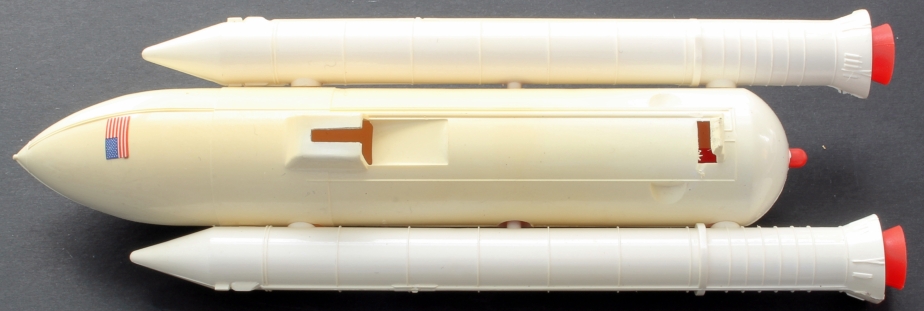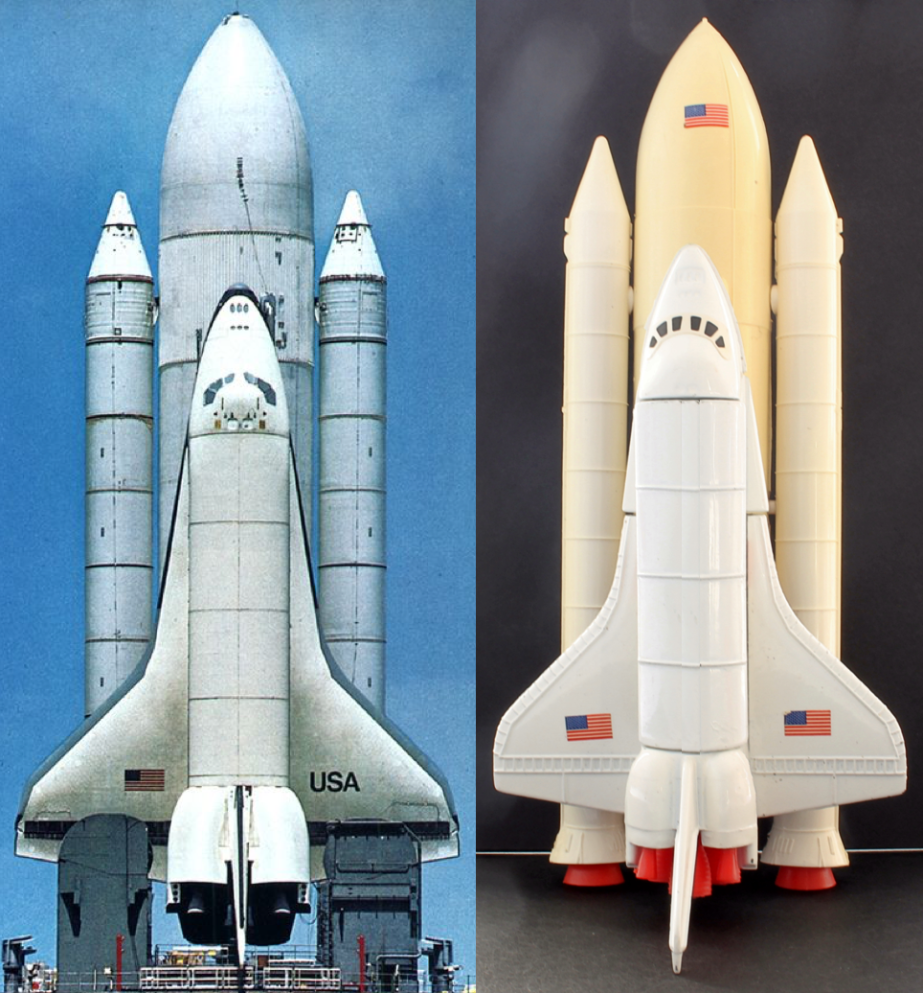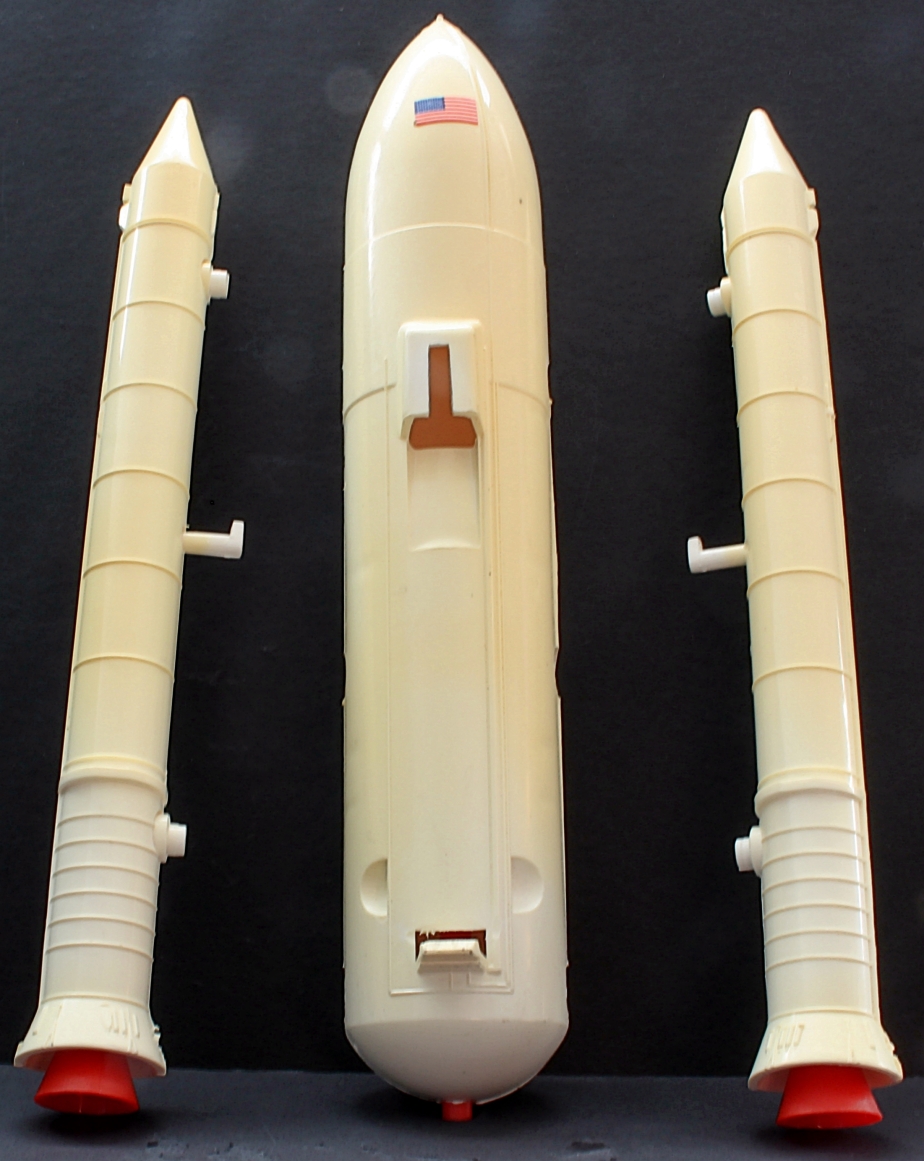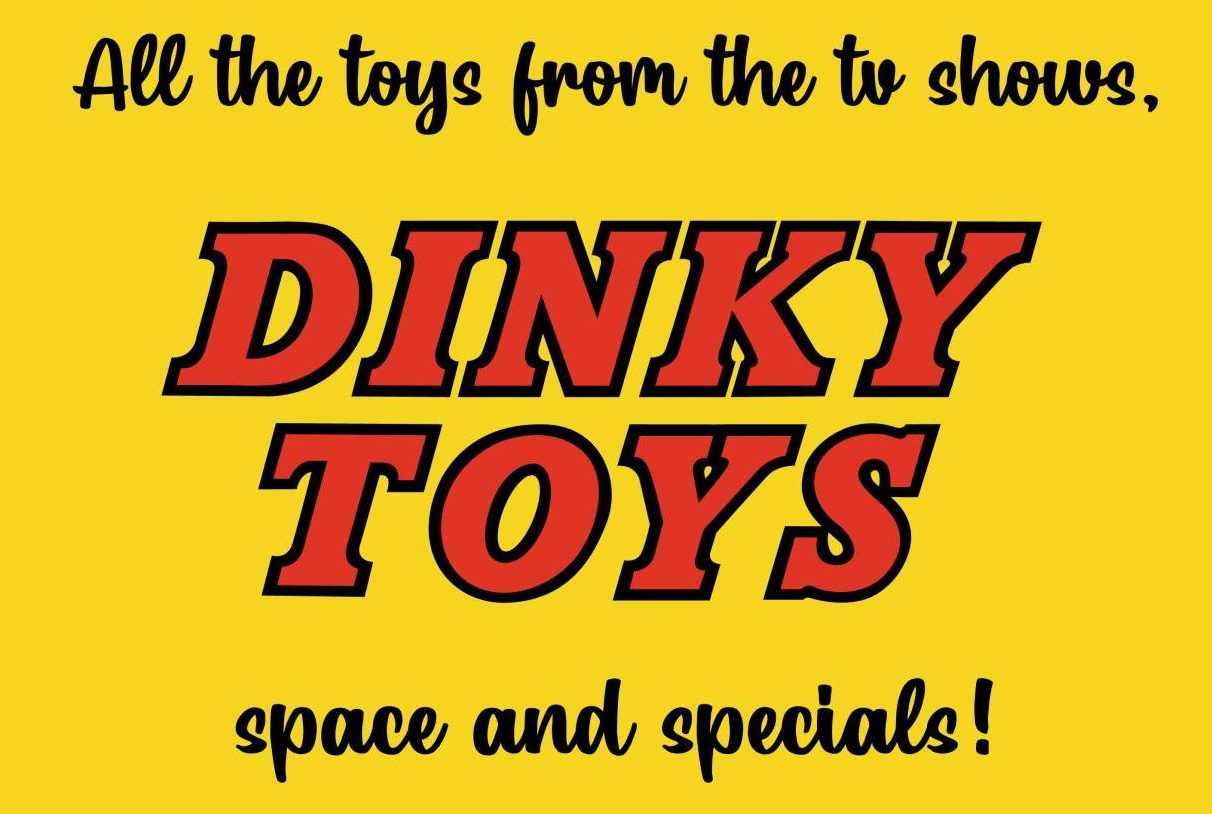The Dinky 364 Shuttle was released in 1979, another model produced just before the factory finally closed. The model was a realistic copy of the space shuttle and included the external tank and the solid rocket boosters that fired the orbiter into space. Also provided was a kit to make an orbiter space lab which was used for onboard experiments and was stored in the cargo bay. It is sometimes wrongly described as a satellite.

The model was provided with decals for the Enterprise, named after the Star Trek space ship, and was rolled out in 1976. However the first shuttle to actually go into space was Columbia in 1981.







The accessories provided with the model were a plastic model kit of an ‘Orbital Lab’ and a cardboard version which both fitted inside the shuttle’s bay, plus instructions and decals for the Enterprise shuttle, the first be built, but which was never designed to go into space.


SHUTTLE v ACTUAL:
The model was a good replica of the actual shuttle and included the disposable additional fuel tanks or boosters.

The Space Shuttle system (1976-2011):
The space shuttle was a partially reusable crew orbital and load delivery system built by Boeing, Rockwell, Lockheed Martin and other that cost around $209 billion dollars. The shuttle itself was 184ft high and when empty, weighed around 75 tons but fully laden with fuel and boosters weighed around 2000 tones.
The space shuttle consisted of an orbiter, an expendable external tank and two recoverable solid rocket boosters. There were 6 orbiters in total which flew 135 missions, delivering payloads such as the Hubble Telescope, Spacelab, ISS components and Galileo, Magellan and Ulysses satellites. Two orbiters were lost killing all fourteen astronauts.
The first ‘space flight’ was made by Columbia in April 1981
The Six Orbiters:

The Space Shuttle Enterprise was the first Space Shuttle orbiter. Built for NASA to perform test flights in the atmosphere, it was constructed without engines or a functional heat shield and was therefore not capable of spaceflight.
Originally, Enterprise had been intended to be refitted for orbital flight, which would have made it the second space shuttle to fly after Columbia. However, during the construction of Columbia, details of the final design changed, particularly with regard to the weight of the fuselage and wings. As this was an expensive proposition, it was determined to be less costly to build Challenger around another body frame.
Enterprise (OV-101) (used only for testing, no orbital capability). Originally to be called ‘Constitution’ renamed partially in honour of Star Trek’s USS Enterprise.
Challenger (OV 099) (lost in 1986)
Columbia (OV-102) (lost in 2003)
Discovery (OV-103)
Atlantis (OV-104)
Endeavour (OV-105) (built to replace Challenger)
The External Tank:

Provided liquid hydrogen and oxygen to the main orbiter engines and discarded after use.
The Solid Rocket Boosters:

Two of these rockets were attached to the external tank providing 83% of the total thrust at lift off. The SRBs were jettisoned after two minutes and then deployed parachutes and landed in the sea to be recovered.

VARIANTS:
There were three Space Shuttle model variations but only to the booster rockets which were produced in a white/cream as well as later in yellow and orange.

PROTOTYPE:
A resin prototype exists which was sold at auction. This model has damage to the tail.


BOX:
The Shuttle came in a hanging window box.

MISCELLANEOUS:
The current home of the space shuttle Enterprise is at the Intrepid Sea, Air and Space Museum in New York City.

CATALOGUES:
The Space Shuttle did not make it to the toy stands until 1979 even though it was advertised in the 1978 consumer catalogue.




